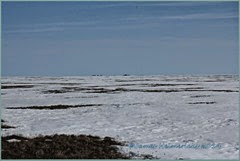After a day of high winds and snow showers, the bright sunshine today made one want to get out for a birding trip. It would most likely be the last one by snow machine since we are just starting our break up period, and flowing water would stop land travel off our home island.
Even with the bright sun, it was a chilly day with a brisk wind out of the southwest and the temperature never got above +34F while I was traveling about. I headed up river from our home and checked out some of the islands that have a sand dune system. The winter wind move sand from the dunes and the snow in this area melts out sooner and creates feeding area for the returning geese sooner than the less sandy areas. In one area next to a small frozen lake there were 50 greater white-fronted geese (Anser albifrons) feeding. Most had already separated into pairs as they spread out over the tundra feeding in the wet areas.
About 4 miles up river I started seeing well defined shore leads as the advancing first water of break up moved our way.
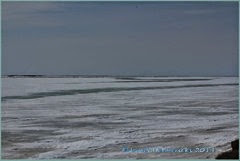
View looking up river with the green bands of the shore leads on each side of the deep water channel.
Besides the white-fronted geese seen feeding who were local birds that would be nesting in a couple weeks, several flocks were seen moving west. There were also a few snow geese mixed in with these white-fronts heading farther to the west to nest.
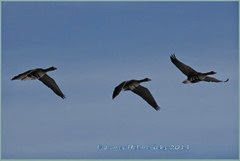
Greater White-fronted Geese
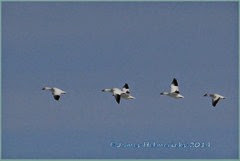
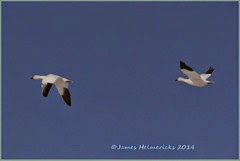
Snow Geese migrating westward.
I covered 14 miles in my travels and saw three new “first of the year” birds on my travels. They were a pair of Hoary Redpolls feeding on grass seeds poking out of a snow patch, a flock of Pomarine Jaegers (Stercorarius pomarinus) migrating east, and a pair of Tundra Swans traveling further to the west.
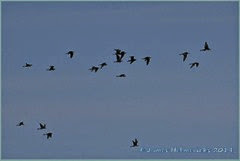
There were a few dark phase individuals in the flock of Pomarine’s , but the majority of them were the light phase with their white bellies.
Most of the Willow Ptarmigan (Lagopus lagopus) I saw were males on territory and the females were near by I’m sure hiding in the patch work of snow and bare tundra. I did find one pair and I was able to get a photo of her. She still has a ways to go to get changed into her summer plumage.
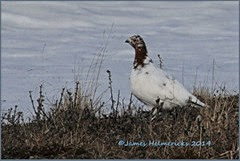
Female willow ptarmigan changing into her summer plumage.
On the way back home I stopped at a nice dry bluff to see what might be starting to turn green. Grasses are not showing any new growth yet, but I found several fresh moth cocoons and puffball mushrooms from last fall that showed the hole blown out in the top when dispersing their spores before freeze up.
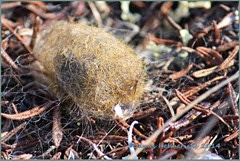
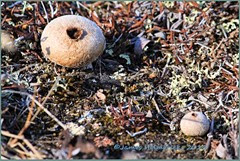
From this location I took a photo back towards the homestead, which was 3.5 miles away to show how much snow still covered the tundra. Overall it was a wonderful trip and besides the birds, I also saw 1 red fox and 15 arctic ground squirrels.
